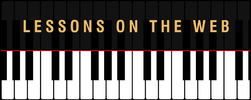|
Using Chords to Color Harmony
Our introduction to Harmony began last week by mapping our route with Intervals and then learning how Scales create stairways between the various intervals to create different harmonies and textures in our music. This week we’re going to explore what happens when you start putting all those different intervals in your scales together, to create chords. Chords combine different notes that stimulate emotions, imagination, and add color to Harmony. Chords in music are a combination of 3 or more notes played together. Sometimes, the notes of a chord are played one right after another instead of being played at the same time. We call these chords broken chords, or arpeggios. Just like our intervals and scales, we have Major Chords and Minor Chords as well as Diminished and Augmented Chords. We name each chord played, according to the 1st note of the chord. This is called the Root. Triads The most common type of chord is the Triad, which is made up of 3 notes: ~ The Root - or the 1st note, the 3rd and the 5th notes of a scale. Let’s look at the different types of Triads:
Now let’s look at the notes in each type of Triad for all keys. Major Triads:
Minor Triads:
Diminished Triads:
Augmented Triads:
If you’ll notice, all of these (many!) chords have just 3 notes in them. That doesn’t mean that all chords have just 3 notes, but for today, we’re just focusing on one type; Triads. Now, anytime you see or play a 3 note chord, you’ll know that you’re playing a Triad. As we continue on through Harmony next week, we’ll learn about new chords that have 4 notes in them, what they are called, and how to play them on the piano. Stay Tuned to LessonsOnTheWeb to learn much more! Leave a Reply. |
AuthorMost blogs written by Archives
June 2020
Categories
All
|


 RSS Feed
RSS Feed